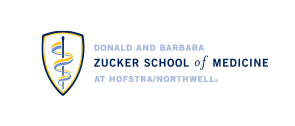Pearls, perils, and pitfalls in the assessment and treatment of attention-deficit/hyperactivity disorder in adolescents
Publication Date
2014
Journal Title
Curr Opin Pediatr
Abstract
PURPOSE OF REVIEW: To provide clinicians with an updated overview of key considerations related to the clinical assessment and management of attention-deficit/hyperactivity disorder (ADHD) in adolescents. RECENT FINDINGS: The American Psychiatric Association's recently revised Diagnostic and Statistical Manual of Mental Disorders-5 included significant changes regarding diagnostic criteria for ADHD in adolescents. The American Academy of Pediatrics (AAP) also recently revised their Clinical Practice Guidelines for ADHD; whereas prior guidelines were focused on children aged 6-12, the new guidelines extend up to age 17. An understanding of these revised diagnostic criteria and clinical guidelines is essential for pediatricians and others who care for adolescents. In addition to providing an updated review of the clinical approach to assessment and treatment of ADHD in adolescents, recent findings are briefly described relating to common comorbidities, psychosocial risks, and long-term outcome. SUMMARY: Diagnosis and treatment of adolescents with ADHD present unique challenges and obstacles. Clinicians need to be careful and deliberate in their evaluation of a teenager with recent-onset symptoms suggestive of ADHD, giving consideration to other conditions that could mimic ADHD and screening for common comorbid conditions. In terms of treatment of adolescents, the AAP recommends medication as the first-line intervention, noting that stimulants have a much broader evidence base and larger effect size than nonstimulants. Although clinicians now have a multitude of medication formulations to choose among, they must also be vigilant to the potential for stimulant misuse and diversion.
Volume Number
26
Issue Number
1
Pages
119-29
Document Type
Article
EPub Date
2013/12/29
Status
Faculty
Facility
School of Medicine
Primary Department
General Pediatrics
PMID
DOI
10.1097/mop.0000000000000053


